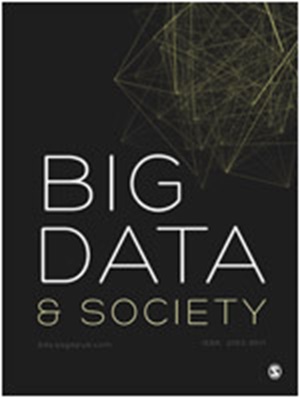‘I started seeing shadows everywhere’: The diverse chilling effects of surveillance in Zimbabwe
IF 5.9
1区 社会学
Q1 SOCIAL SCIENCES, INTERDISCIPLINARY
引用次数: 2
Abstract
Recent years have witnessed growing ubiquity and potency of state surveillance measures with heightened implications for human rights and social justice. While impacts of surveillance are routinely framed through ‘privacy’ narratives, emphasising ‘chilling effects’ surfaces a more complex range of harms and rights implications for those who are, or believe they are, subjected to surveillance. Although first emphasised during the McCarthy era, surveillance ‘chilling effects’ remain under-researched, particularly in Africa. Drawing on rare interview data from participants subjected to state-sponsored surveillance in Zimbabwe, the paper reveals complex assemblages of state and non-state actors involved in diverse and expansive hybrid online–offline monitoring. While scholarship has recently emphasised the importance of large-scale digital mass surveillance, the Zimbabwean context reveals complex assemblages of ‘big data’, social media and other digital monitoring combining with more traditional human surveillance practices. Such inseparable online–offline imbrications compound the scale, scope and impact of surveillance and invite analyses as an integrated ensemble. The paper evidences how these surveillance activities exert chilling effects that vary in form, scope and intensity, and implicate rights essential to the development of personal identity and effective functioning of participatory democracy. Moreover, the data reveals impacts beyond the individual to the vicarious and collective. These include gendered dimensions, eroded interpersonal trust and the depleted ability of human rights defenders to organise and particulate in democratic processes. Overall, surveillance chilling effects exert a wide spectrum of outcomes which consequently interfere with enjoyment of multiple rights and hold both short- and long-term implications for democratic participation.“我开始看到到处都是阴影”:津巴布韦监视的各种寒蝉效应
近年来,国家监督措施日益普遍和有效,对人权和社会正义的影响越来越大。虽然监视的影响通常是通过“隐私”叙事来构建的,但强调“寒蝉效应”对那些受到监视或相信自己受到监视的人来说,会带来更复杂的伤害和权利影响。尽管在麦卡锡时代首次强调,但监控的“寒蝉效应”仍然研究不足,尤其是在非洲。该论文利用津巴布韦受国家资助的监测参与者的罕见采访数据,揭示了参与多样化和广泛的线上线下混合监测的国家和非国家行为者的复杂组合。尽管学术界最近强调了大规模数字大规模监控的重要性,但津巴布韦的背景揭示了“大数据”、社交媒体和其他数字监控与更传统的人类监控实践的复杂组合。这种不可分割的线上和线下的重叠使监控的规模、范围和影响更加复杂,并将分析作为一个整体。本文证明了这些监视活动如何在形式、范围和强度上产生寒蝉效应,并暗示了对发展个人身份和参与式民主的有效运作至关重要的权利。此外,数据揭示了个人之外对替代和集体的影响。其中包括性别层面、人际信任受到侵蚀,以及人权维护者组织和参与民主进程的能力减弱。总的来说,监督的寒蝉效应产生了广泛的结果,从而干扰了多重权利的享受,并对民主参与产生了短期和长期影响。
本文章由计算机程序翻译,如有差异,请以英文原文为准。
求助全文
约1分钟内获得全文
求助全文
来源期刊

Big Data & Society
SOCIAL SCIENCES, INTERDISCIPLINARY-
CiteScore
10.90
自引率
10.60%
发文量
59
审稿时长
11 weeks
期刊介绍:
Big Data & Society (BD&S) is an open access, peer-reviewed scholarly journal that publishes interdisciplinary work principally in the social sciences, humanities, and computing and their intersections with the arts and natural sciences. The journal focuses on the implications of Big Data for societies and aims to connect debates about Big Data practices and their effects on various sectors such as academia, social life, industry, business, and government.
BD&S considers Big Data as an emerging field of practices, not solely defined by but generative of unique data qualities such as high volume, granularity, data linking, and mining. The journal pays attention to digital content generated both online and offline, encompassing social media, search engines, closed networks (e.g., commercial or government transactions), and open networks like digital archives, open government, and crowdsourced data. Rather than providing a fixed definition of Big Data, BD&S encourages interdisciplinary inquiries, debates, and studies on various topics and themes related to Big Data practices.
BD&S seeks contributions that analyze Big Data practices, involve empirical engagements and experiments with innovative methods, and reflect on the consequences of these practices for the representation, realization, and governance of societies. As a digital-only journal, BD&S's platform can accommodate multimedia formats such as complex images, dynamic visualizations, videos, and audio content. The contents of the journal encompass peer-reviewed research articles, colloquia, bookcasts, think pieces, state-of-the-art methods, and work by early career researchers.
 求助内容:
求助内容: 应助结果提醒方式:
应助结果提醒方式:


